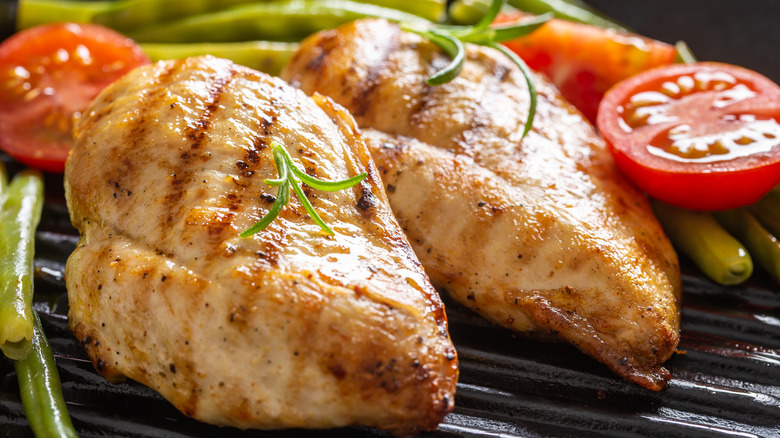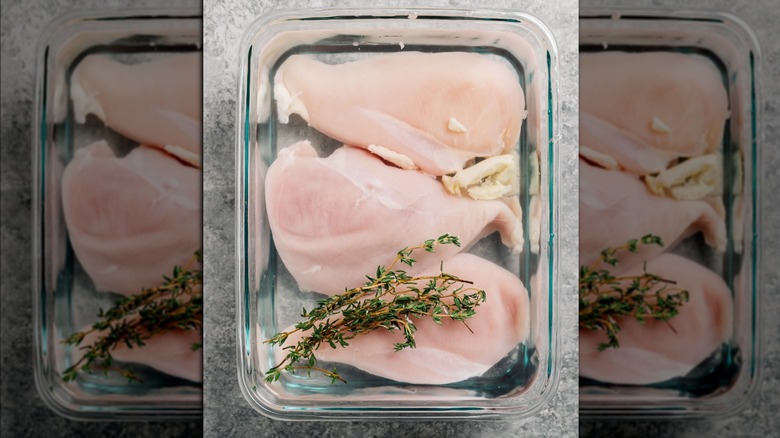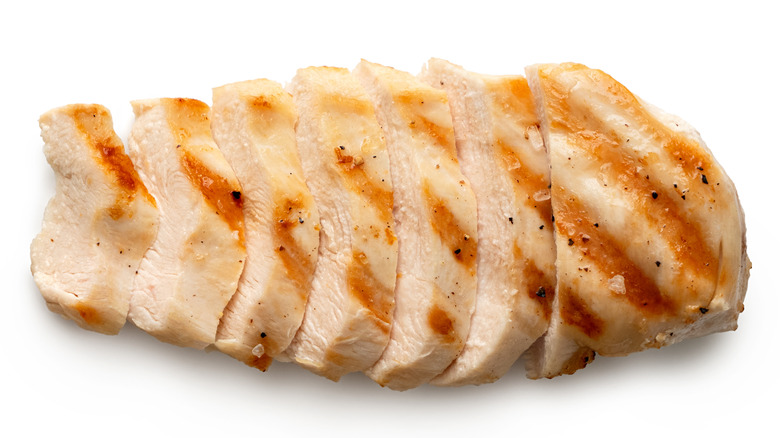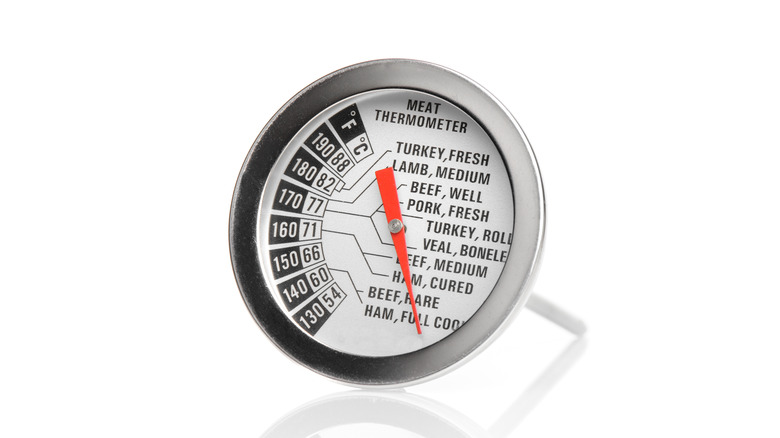Grillmaster Reveals The Most Common Mistakes You're Making While Grilling Chicken Breasts
Once the weather warms up, lot of folks hope to morph into master chefs behind the grill. Nothing wrong with that! Topping the list of many people's favorite meats to throw on the grill is the chicken breast — after all, it's a lot healthier than hot dogs and much, much cheaper than steak. The tricky thing with chicken, though, is that it's not nearly as easy to have it come out right on a grill as it is if you cook it in an oven. If you don't prepare it properly, you might wind up with something that's charred and underdone on the inside. As the CDC would have you know, undercooked chicken puts you at risk for food poisoning.
Well, salmonella isn't something you want to send home with your barbecue guests, but neither do you want to serve up chicken that's tasteless and dry. To help us out with our chicken-grilling dilemma, Mashed spoke with Melissa Cookston, seven-time world barbecue champion, cookbook author, and owner of the restaurant chain Memphis BBQ Company. You might recognize her as a judge from Season 1 of the Netflix series "American Barbecue Showdown." As Cookston explained: "The ubiquitous chicken breast is a grill-time favorite," but admitted "it has a tendency to be dry and tough when improperly cooked." Luckily, she has some tips to help us avoid that.
Don't forget to prep the chicken breasts
When you're cooking chicken breasts, don't just throw them on the grill and go. Instead, Cookston suggests you take the time to brine them ahead of time. "Boneless, skinless chicken breasts don't have much fat or skin to help retain moisture," she says, but advises that "making a quick brine will enable the breasts to retain more moisture during the cooking process."
A simple wet brine need not involve anything more complicated than mixing ¼ cup of salt (Cookston prefers kosher) with three cups of warm water and 1 ½ cups of ice. Then, you soak the breasts in this mixture for at least half an hour before removing and patting them dry. If you'd like to flavor the brine, though, Cookston suggests adding ¼ cup of brown sugar and a tablespoon of cracked black pepper. Other seasonings you might like to experiment with include chili powder, cumin, or paprika. If you'd prefer to season your chicken after the brining, do so after you've dried off the chicken breasts, but don't use too much salt since it will already have picked up some salt from the brine. As Cookston cautions, "You can always add more [salt], you can't take [it] away."
Don't grill it wrong side up
Grillmaster Melissa Cookston says the best way to cook skin-on chicken breasts is to "start skin side down." The skin side, she points out, is smoother than the meat side, explaining this means "it is naturally more resistant to sticking to the grill." Another way to help prevent the meat from sticking (especially if you're grilling skinless breasts) is to oil them before cooking. Cookston suggests brushing on a high-temperature oil such as canola or avocado oil, and says this should be done before the breasts are seasoned.
Once you've placed your chicken breasts on the grill, cook them for two to three minutes. At this point, Cookston says, the skin should "naturally release ... from the grates." Give each breast a quarter-turn, then cook them for another two to three minutes. Doing so, Cookston says, "will help develop those beautiful cross-hatch grill marks," reminding us that "people eat with their eyes!" Finally, turn the breasts over and cook them skin side up until they're done.
Don't forget to use a meat thermometer
When you're grilling a steak or a burger, there's such a thing as rare, medium, or well-done. As Cookston puts it, "When cooking beef, the internal temperature is a matter of preference." With chicken breasts, however, temperature "is a matter of safety." Chicken breasts must reach 165 degrees since anything under this temperature could be a health hazard. The problem with this target temp, though, is you have to hit it exactly, since Cookston cautions that "any temperature higher than that will result in dry, tough chicken."
So how can you make sure your chicken breasts are exactly 165 degrees, not one degree more or less? There's only one way: use a meat thermometer. You can use a fancy WiFi-enabled one, such as barbecue pro Cookston favors, or you can use a cheap needle-and-dial one, but you can't just guess at the chicken's degree of doneness with any degree of success. As Cookston puts it, "Finishing at the 165-degree mark is imperative to keeping a healthy, happy dinner party going on." Even if you're grilling for yourself alone (no reason why you shouldn't), you deserve the tastiest, juiciest, safest chicken breast possible. So use that thermometer and enjoy your dinner.



